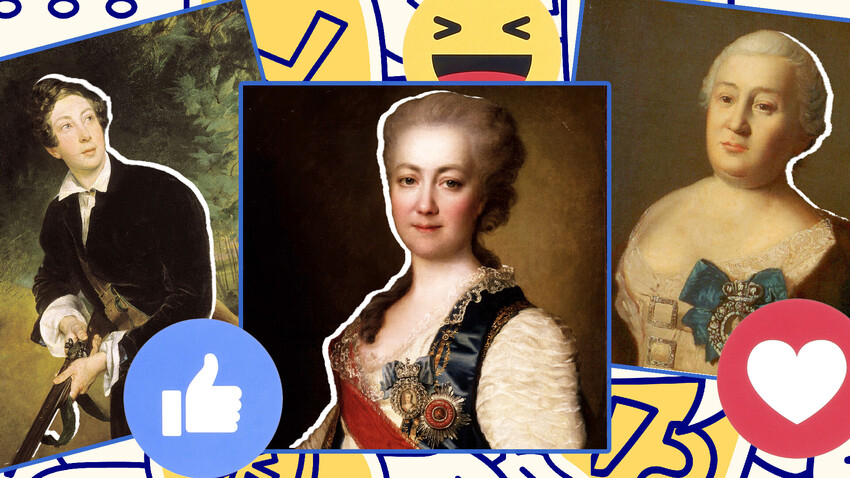
It was a piece of cake to write oneself into a list of Ivan the Terrible’s enemies. But, to become a personal friend of the tsar back then was nigh impossible. Before the era of Peter the Great, the rules of an aristocratic hierarchical system (mestnichestvo) ruled at the court of the Russian tsar – the more important one was in the state, the closer they were literally to the tsar. These people were sitting by him during feasts, accompanied him on hunts, went with him to a banya. During these times, the tsar had no freedom to choose his friends; he was “friends” with the representatives of the most noble families by necessity.
These rules, as many others, were broken by Peter the Great, who, back in his young days, made some foreigner friends in the German Quarter in Moscow; at any age, he easily made acquaintance with anyone, regardless of their rank – it only mattered that they knew their craft well.

Portrait of A. K.Nartov, 18th century, Ivan Nikitin
State Hermitage Museum/Public DomainThe “tsar’s machinist,” as he was dubbed, Andrey Konstantinovich Nartov didn’t owe anything to Peter the Great; quite the contrary. Nartov was a bright mechanic, a lathe inventor and, of course, a virtuoso of lathe-working. Tsar Peter the Great himself was learning from Andrey Nartov, who came from the “people of common rank”.
At the age of 15, Andrey began studying lathe working at the Moscow School of Mathematics and Navigation, founded by the tsar. In 1718, Peter, having learned about Nartov’s talent, sent him to study in Europe and, upon his return, made him a supervisor of the tsar’s lathe workshop.
In essence, it was a workshop for which the tsar bought cutting-edge European machines and commissioned Nartov to test them. The lathe workshop in Peter the Great’s palaces was located close to the tsar’s chambers, since the tsar liked to relax while working with a lathe. Natrov’s son, Andrey Andreevich, later wrote down and published his father’s stories about Peter the Great. They precisely capture the ironic and heroic character of the emperor.
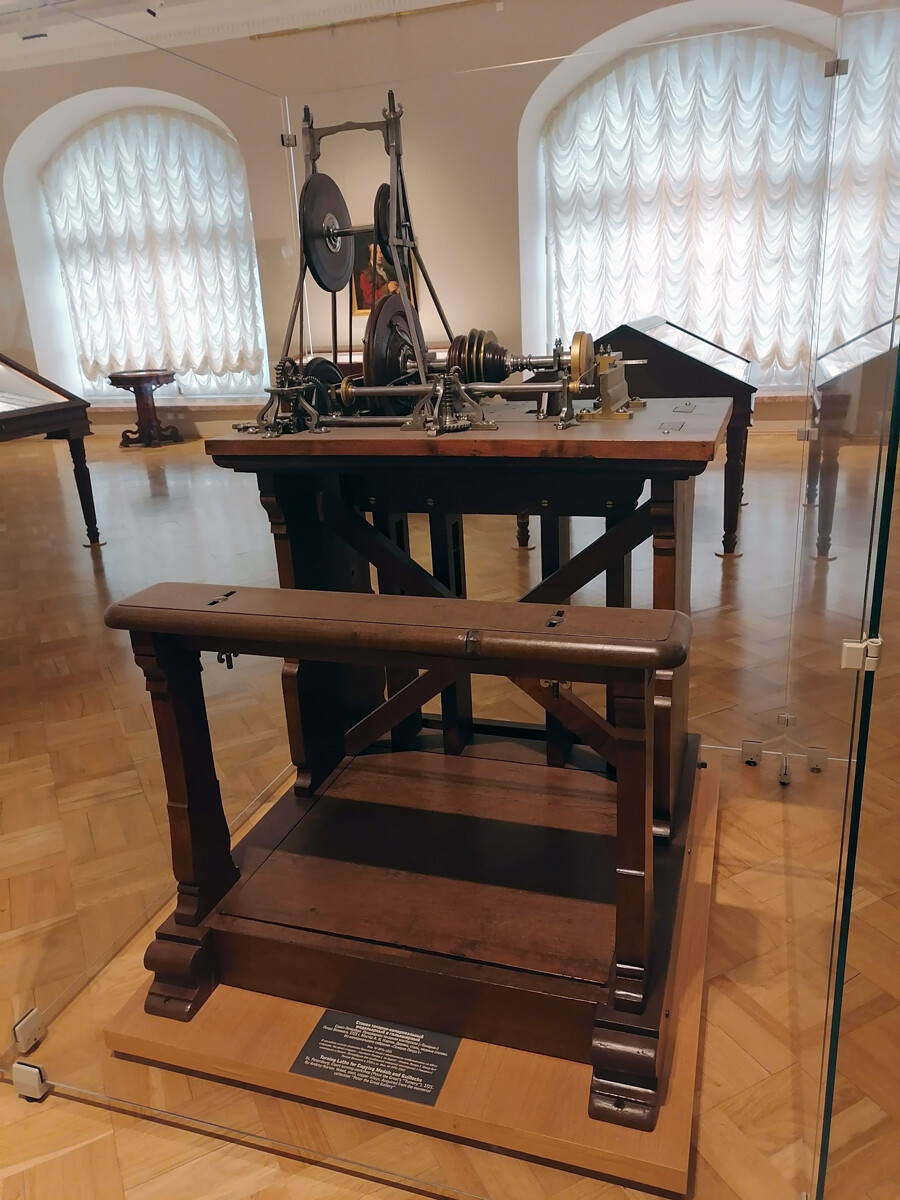
Turning and copying machine medallion and guillotine works by A. K. Nartov. The court turning workshop (lathe) of Peter I. 1721. The State Hermitage Museum.
Netelo (CC BY-SA 4.0)“The ruler, making a human figure on a lathe machine and in a merry mood, for the work was coming along well, asked Nartov, his mechanic, ‘How am I working?’ And when Nartov replied, ‘Well,’ His Majesty said, ‘Indeed, Andrey, I do a fair job carving bone with a chisel and yet I can’t carve those who are stubborn into shape with a club.”
Or this story: “A young lady Hamilton was admitted to His Majesty into his lathe workshop […], who he embraced and tapped with his hand on the shoulder and then said, ‘It’s nice to love women, but not always, lest we, Andrey, forget the craft.’ After that, he sat down and started carving.”
After Peter the Great’s death, Andrey Nartov, who wasn’t famous for his refined manners, was removed from court, but he continued working as an artillery engineer. Shortly before his death, Nartov received the rank of a State Councillor. He died in St. Petersburg in 1756.
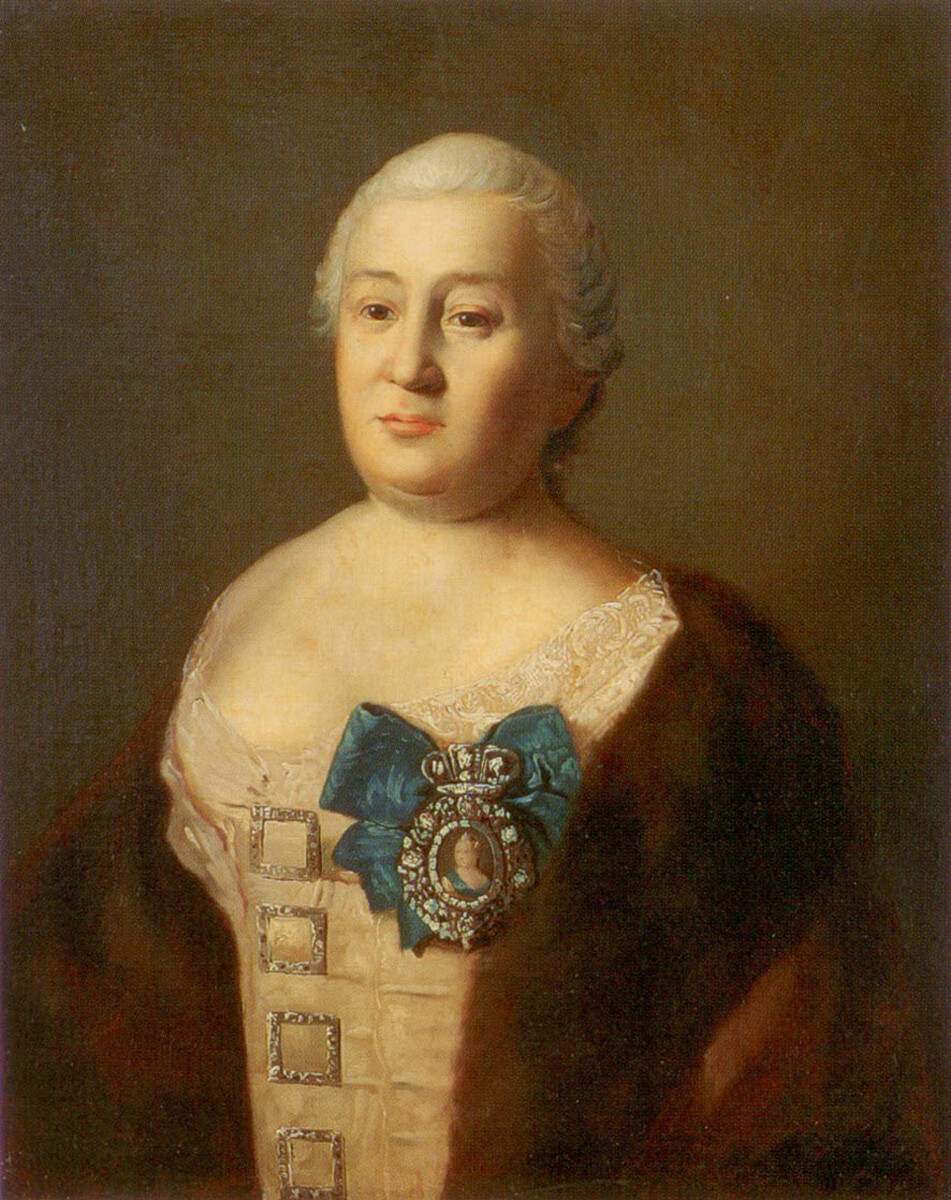
Mavra Shuvalova by Alexey Antropov, the 1750s
Public DomainThe story of Mavra Yegorovna Shuvalova is a classic example of how a lady-in-waiting of little significance from the court of the Grand Duchess could become all-powerful and literally command people’s fates. As a 10-year-old girl, Mavra Yegorovna Shepeleva became the lady-in-waiting of Anna Petrovna, the daughter of the first emperor. Mavra belonged to the old boyar line of Shepelevs, but she came from its poor branch. Her distant relative, General Dmitry Shepelev, secured her the position of a lady-in-waiting to the tsesarevna Anna.
In 1720, Anna Petrovna married Charles Frederick, Duke of Schleswig-Holstein-Gottorp – their son would become Emperor Peter III. Mavra Yegorovna, serving the young tsesarevna, went with her and the Duke in 1727 to Holstein, to Kiel, where she became the Duke’s lover. “The Duke and Mavra have grown utterly vulgar. He doesn’t spend a single day in the house, riding with her openly around the city in a carriage, making visits with her and visiting theaters,” Anna complained to her sister, Elizaveta Petrovna.
It was Elizaveta Petrovna who took Mavra Shepeleva as a lady-in-waiting after the death of Anna in 1728. Mavra returned to Russia and became the best friend of Elizaveta, the future empress. Mavra lived with her in Moscow at the Pokrovskoye-Rubtsovo estate (now, in Moscow’s Basmanny district) and was famous for her ability to cheer Elizaveta up with a caustic joke. She loved to feast and to play cards. In 1738, she was married to Valet de chambre Peter Shuvalov, who participated in the 1741 coup and put Elizaveta Petrovna on the throne.
From that point onward an acquaintance with Mavra Shuvalova was a big advantage – she was the closest friend of the empress, sharing her old Moscow hobbies like playing cards and scratching heels before bed.
Mavra’s husband became the knight of all Russian Empire's highest orders and one of the main officials of the state. Her husband’s cousin, Ivan Ivanovich Shuvalov, founder of Moscow University, became the favorite of the empress herself. And General Dmitry Shepelev, who once put Mavra Yegorovna in the position of a lady-in-waiting, became an important court official and received the Order of St. Andrew the Apostle the First-Called.
Shuvalova was arrogant with people she didn’t know; she pursued her enemies, yet again using her connections. But, it’s thanks to her that the line of Shuvalovs from Elizaveta’s era rose to become one of the greatest families of the empire.
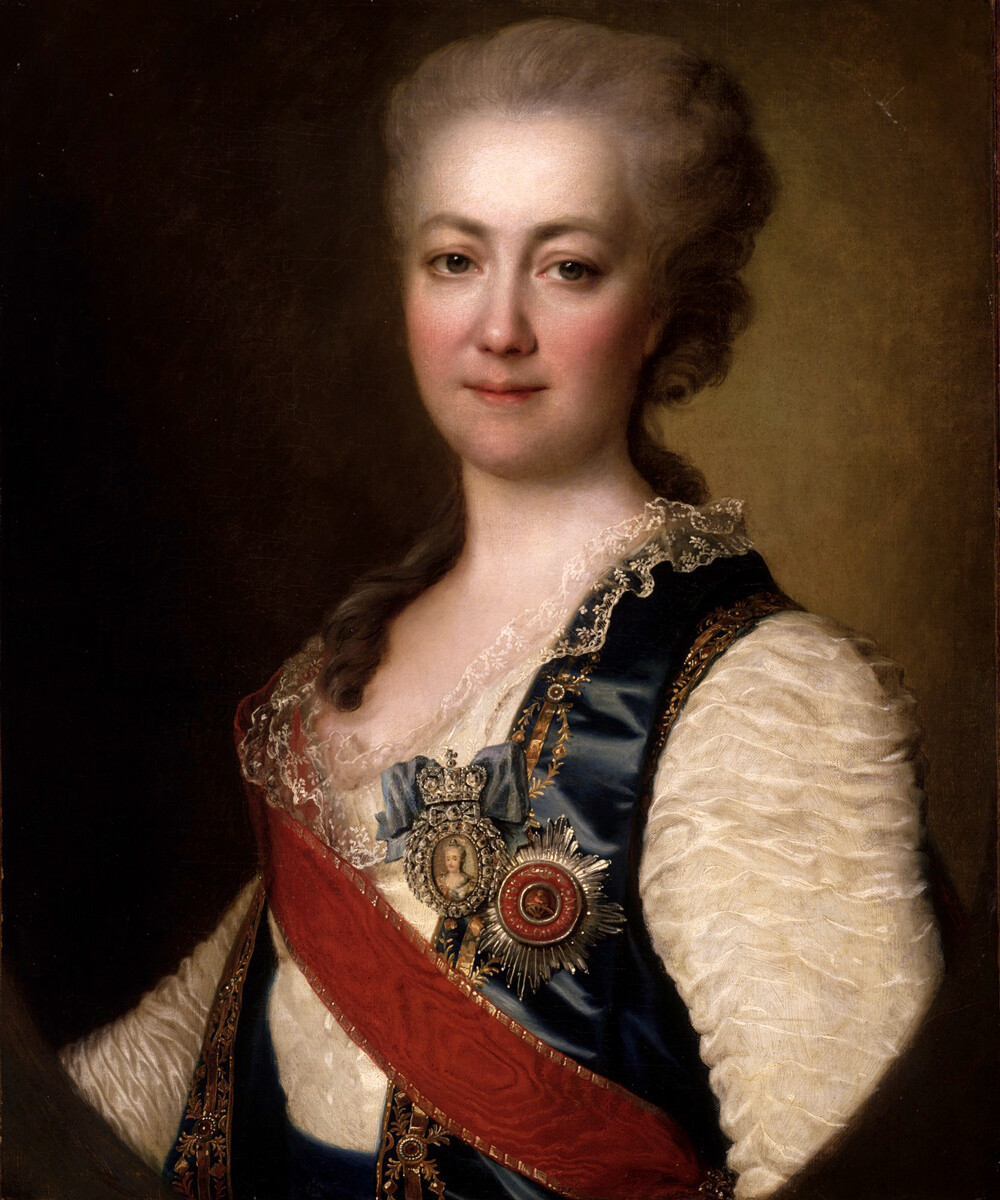
Yekaterina Dashkova by Dmitry Levitsky
Hillwood Estate, Museum & Gardens/Public DomainThe friendship of Princess Ekaterina Alekseyevna (Catherine the Great) and Princess Yekaterina Vorontsova (Dashkova) started strangely – Dashkova’s sister, Elizaveta, was a lover of Peter III. He spent almost all his time with her, ignoring his wife. During the palace coup, Yekaterina Dashkova sided with Catherine the Great, perhaps realizing that the rebelling emperor’s wife had the upper hand.
The 19-year-old, very self-confident, wearing a male officer’s uniform Yekaterina Dashkova felt like standing on the stage of a historical moment. She could allow herself to burst into the Governing Senate’s session and whisper something in the ear of the ruling empress. Possibly, such a character of their relations became the reason for their falling-out. After the death of her husband in 1764, Dashkova stepped away from court life. In 1769, she went on a grand voyage across Europe, where she was received as a friend of the Russian empress; she met Voltaire, Diderot, Adam Smith and Benjamin Franklin.
When, in 1782, Dashkova returned to Russia, her relationship with Catherine the Great was revived. The empress made Dashkova the head of the St. Petersburg Academy of Sciences and, soon, Yekaterina Romanovna founded the Imperial Academy of Arts and Sciences, which was to research the Russian language. Its work resulted in a six-volume Dictionary of the Russian Academy.
All her last years, Yekaterina Dashkova dedicated to education. On her initiative, the main works of world’s literature began to be translated into the Russian language. Rivaling Catherine the Great in her erudition, Yekaterina Dashkova was herself one of the great figures of the Russian Enlightenment.
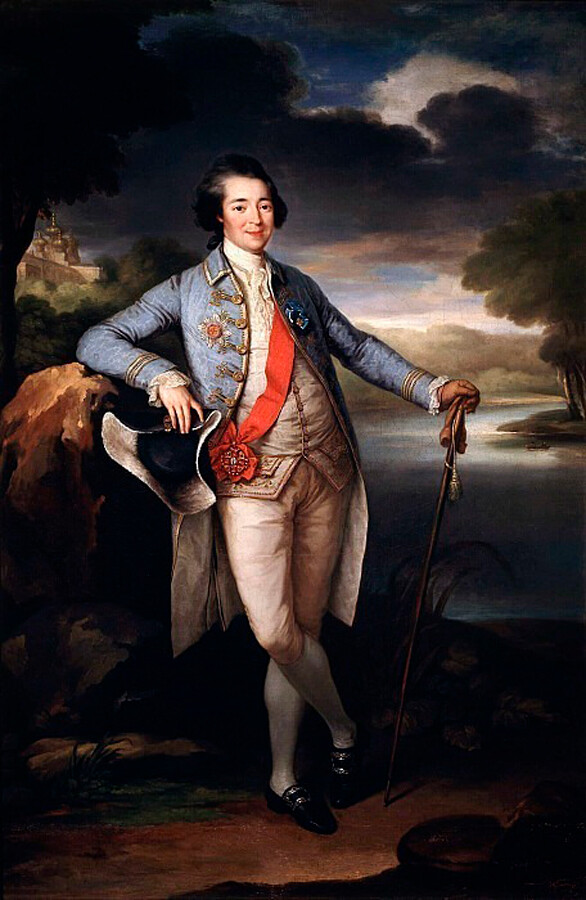
29-year-old Alexander Kurakin, 1781, Richard Brompton
Tretyakov Gallery/Public DomainNikita Panin, the governor of Grand Duke Pavel Petrovich, had no children of his own. He was raising his great-nephew, Prince Alexander Kurakin, who became the Grand Duke’s friend from childhood. Kurakin received his education abroad and, later, he accompanied Pavel Petrovich on many travels, including on his trip to Berlin to meet Pavel’s future spouse, Maria Feodorovna.
Alexander Kurakin was considered the most brilliant of Russian aristocrats. Holy Roman Emperor Joseph II himself described him as a “gracious man with the manners of high society”. In the circles of European aristocracy, Kurakin was called the “diamond prince” for his love of diamond jewelry – his hats, walking sticks, epaulets and clothing were studded with diamonds and gold.
With the ascension of Pavel to the throne, Prince Kurakin became Vice Chancellor. He, perhaps, knew little about state matters, but he was a worldly-wise official and held his own through his age and authority. In 1808-1812, Kurakin headed the Russian embassy in France, leaving it after the invasion of Russia by Napoleon began.
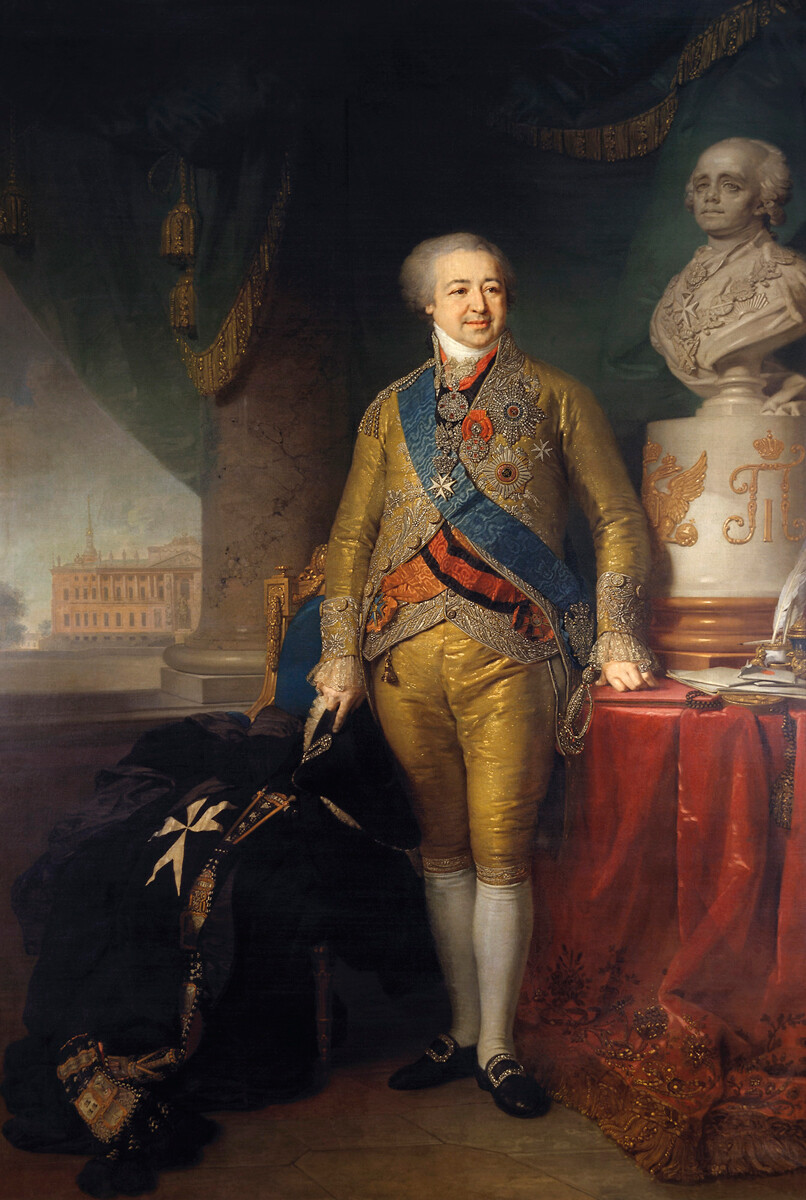
Alexander Kourakin in 1802, by Vladimir Borovikovsky
Tretyakov Gallery/Public domainThere’s a legend that, in 1810, something happened to Kurakin in Paris, which ultimately became the reason for his death. During one of the balls a fire broke out. Kurakin, as a true aristocrat, would not allow himself to leave the blazing hall until all the ladies had left. The “diamond prince” was literally clad in clothing with diamonds and gold – and it saved his life, but he still suffered heavy burns that undermined his health completely.
In the last years of his life, Kurakin suffered from gout and other health issues, but he continued to hold luxurious balls in Moscow and St. Petersburg. Since Kurakin was initiated into the highest degrees of Freemasonry, he took a vow of celibacy; however, during his lifetime, he became the father of more than 50 illegitimate children.
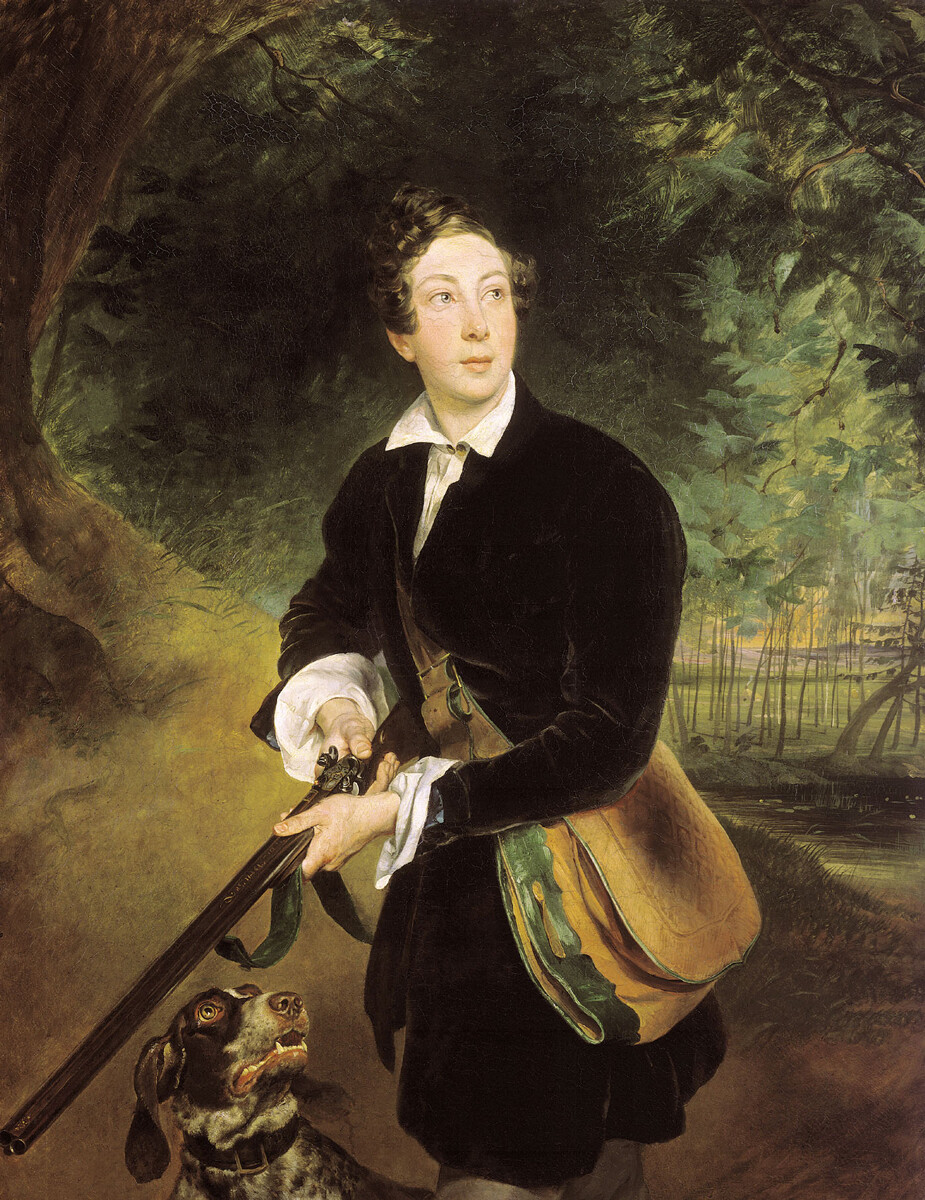
Alexey Tolstoy by Karl Bryullov, 1836
Public DomainAccording to the tradition of raising Grand Dukes together with other little aristocrats, Alexey Konstantinovich Tostoy, who later became a famous writer, the author of the novel ‘Prince Serebrenni’, became the childhood friend of future Emperor Alexander II. Alexey Konstantinovich was a second cousin of Leo Tolstoy. Alexey (along with other young aristocrats) was introduced to tsesarevich Alexander when they were 14 and 13 years old, respectively and they remained friends for many years.
Alexey astounded the tsesarevich and his entourage with his herculean strength. He could bend cutlery and fire pokers into knots, he could lift the heir up to the throne with ease and give him rides on his shoulders; once, he even wrestled Emperor Nicholas Pavlovich himself. Lady-in-waiting Alexandra Rosset describes this moment in her memoirs. “He’s awfully funny and he offered the Sovereign to wrestle him. His Majesty told him: – Me? You are forgetting, though, that I’m stronger than you and much taller. – That doesn’t matter, I’m not afraid to test my strength against anyone, I’m very strong and I know it,” young Alexey replied.
Nicholas Pavlovich himself was distinguished for his remarkable strength. “In the athletic sense, he bested all the men from the generals and officers that I’ve seen in the army,” Tomsk governor Joseph Dubetsky wrote about him. But young Tolstoy would not be scared off by anything. “I have a Cossack soul,” the boy declared to the emperor and “immediately darted forward like a cannonball thrown out of a cannon’s barrel. Having got the permission to strike full-force, Alexey wrestled with the two-meter-tall emperor for a while. The Sovereign, repelling this attack with one arm, at times was saying, ‘He’s strong, this boy, strong and agile.’ Having noticed that he was finally out of breath, gasping for air, the Sovereign lifted him up, kissed him and told him, ‘A fine and strong young man’.”
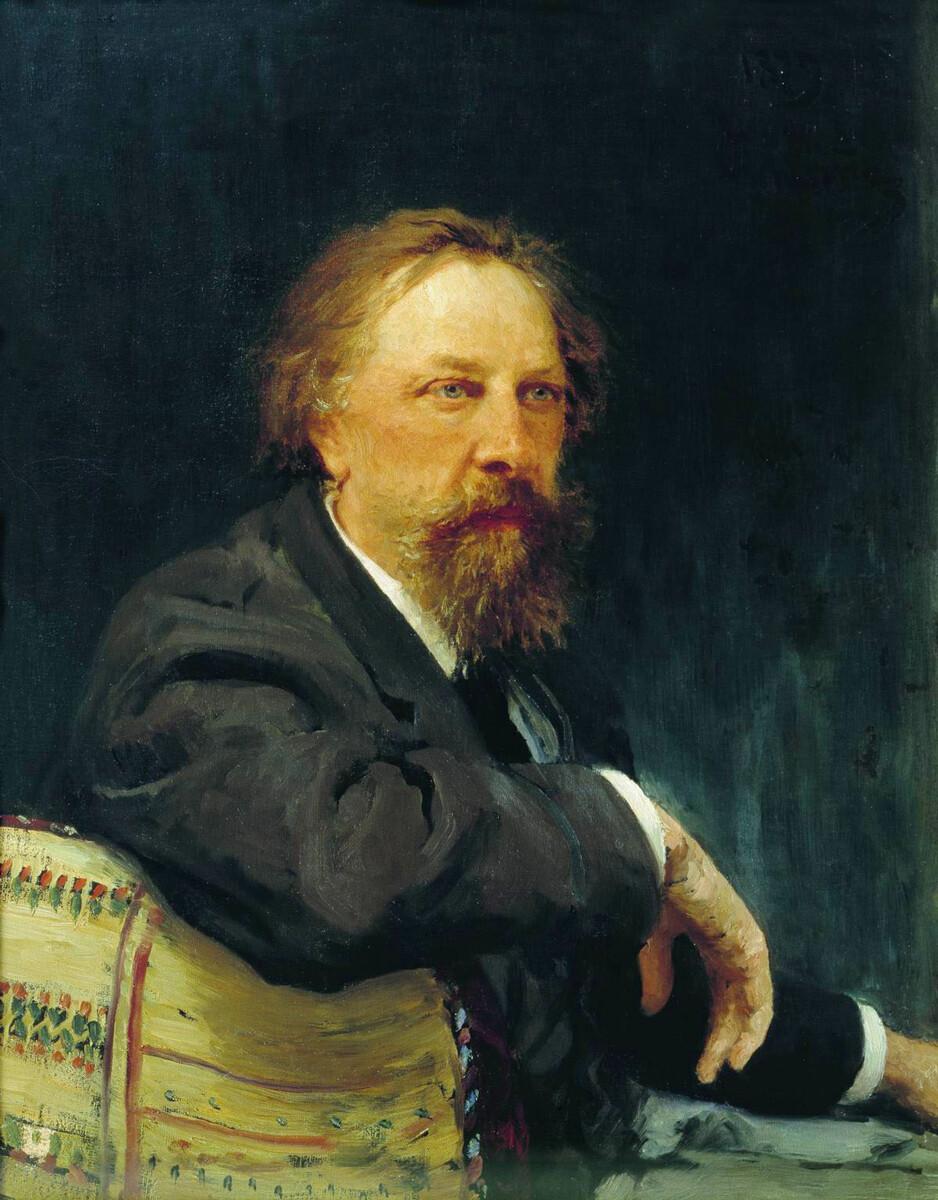
Alexey Tolstoy, 1879, by Ilya Repin
Public DomainAlexey Tolstoy became a civil servant, although he was more famous as a writer, the author of the novella ‘The Vampire’ and the co-author of a famous literary hoax – fictional writer ‘Kozma Prutkov’. He didn’t use his friendship with the emperor to advance in his career and, after his resignation in 1861, he only rarely came to St. Petersburg. However, Alexey Tolstoy once wrote to Emperor Alexander II asking him to protect the old church of Saint Tryphon in Moscow from destruction. Alexander Nikolayevich never replied.
The last years of Tolstoy’s life were dedicated to travels across Europe and literary pursuits. His most significant novel, ‘Prince Serebrenni’, was published in 1863. To cure his chronic headaches that Tolstoy suffered from in his old age, he was prescribed morphine injections, which became the cause of his early death.
Dear readers,
Our website and social media accounts are under threat of being restricted or banned, due to the current circumstances. So, to keep up with our latest content, simply do the following:
If using any of Russia Beyond's content, partly or in full, always provide an active hyperlink to the original material.
Subscribe
to our newsletter!
Get the week's best stories straight to your inbox